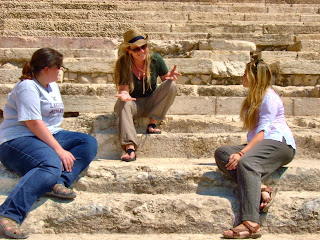Dictionary of The Old Testament Prophets: Initial Impressions
(Thanks to the good folks at InterVarsity Press, particularly, Adrianna Wright, for providing me with this review copy.)
The eighth and final installment of the famous "Black Dictionaries" is now complete with the publication of the Dictionary of The Old Testament Prophets (henceforth, D.T.O.T.P), edited by Mark J. Boda and J. Gordon McConville, some twenty years after the first volume, the Dictionary of Jesus and the Gospels, appeared in print.
D.T.O.T.P. boasts of some 94 contributors along with 113 articles in a 966 page volume (including indices). Many of the contributors will be familiar to biblical scholars and students with names such as Craig Evans, John Goldingay, J. Gordon McConville, John Oswalt, and Rikk Watts, to name but a few of the luminaries. Covering both the major and minor prophets, the editors chose to follow the convention of the Christian Old Testament by including Daniel in this volume (ix).
Receiving the volume today, I chose to read Rikk Watts' excellent essay, "Exodus Imagery" (205-214). Watts has established himself as an expert on this subject as his revised dissertation, Isaiah's New Exodus in Mark, demonstrates. Watts helpfully outlines his approach at detecting exodus themes throughout the prophetic material by one, delineating the exodus as "the events from Yahweh's initial response to Israel's cry in Egypt up to Moses' final words on the thresh unwieldy (205). Watts begins his investigation by outlining "Exodus Themes" (205-206) in order to trace for the reader the major themes that will reappear in the subsequent prophetic literature. Turning to the Prophets, the section on Isaiah (206-208) gets the most detailed treatment, followed by Jeremiah and Ezekiel, before turning to the Book of Twelve (210-212). Watts' contribution will prove a treasure trove for those wanting to investigate this theme throughout the prophetic corpus. Watts conclusion, in part is worth quoting here:
I look forward to reading through more of this dictionary and will provide several reflections on various articles in the days ahead.
The eighth and final installment of the famous "Black Dictionaries" is now complete with the publication of the Dictionary of The Old Testament Prophets (henceforth, D.T.O.T.P), edited by Mark J. Boda and J. Gordon McConville, some twenty years after the first volume, the Dictionary of Jesus and the Gospels, appeared in print.
D.T.O.T.P. boasts of some 94 contributors along with 113 articles in a 966 page volume (including indices). Many of the contributors will be familiar to biblical scholars and students with names such as Craig Evans, John Goldingay, J. Gordon McConville, John Oswalt, and Rikk Watts, to name but a few of the luminaries. Covering both the major and minor prophets, the editors chose to follow the convention of the Christian Old Testament by including Daniel in this volume (ix).
Receiving the volume today, I chose to read Rikk Watts' excellent essay, "Exodus Imagery" (205-214). Watts has established himself as an expert on this subject as his revised dissertation, Isaiah's New Exodus in Mark, demonstrates. Watts helpfully outlines his approach at detecting exodus themes throughout the prophetic material by one, delineating the exodus as "the events from Yahweh's initial response to Israel's cry in Egypt up to Moses' final words on the thresh unwieldy (205). Watts begins his investigation by outlining "Exodus Themes" (205-206) in order to trace for the reader the major themes that will reappear in the subsequent prophetic literature. Turning to the Prophets, the section on Isaiah (206-208) gets the most detailed treatment, followed by Jeremiah and Ezekiel, before turning to the Book of Twelve (210-212). Watts' contribution will prove a treasure trove for those wanting to investigate this theme throughout the prophetic corpus. Watts conclusion, in part is worth quoting here:
The extensive, diverse, sometimes specific, but more commonly allusive nature of the prophets' appeals to the exodus strongly implies a significant body of knowledge shared between themselves and their audiences. The exodus, in all its breadth of interwoven ideas and motifs, apparently is not their invention but rather is an older complex of traditions upon which they freely drew without any hint of the need either to justify that appeal or to explain its presumed content. Here was something sufficiently well known that although the prophets sometimes were very specific in drawing parallels, in many places they felt that a simple allusion would suffice (212).
I look forward to reading through more of this dictionary and will provide several reflections on various articles in the days ahead.


Comments